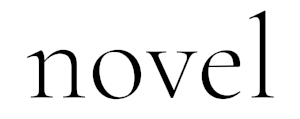The Best Brands Say No
As an entrepreneur, I am constantly thinking about time. How can I have better work/life balance? How can I find time to do more writing/networking/culture building? How can I get up earlier, meditate in the evenings and spend more time with my family on the weekends? These questions have swirled around in my mind for the last 19 years.
A couple of months ago, I heard a business coach say, “The best business people are experts at saying no.” But how exactly does one become an expert at saying no? And what about innovation and experimentation as a way of evolving your business? How do you innovate if you say no all the time? How do you maintain the tension between creativity and structure?
I once went on a retreat with a Hindu priest who taught me that the first step in skillfully managing my time is managing my energy. “First you must identify the things that give you energy versus the things that drain your energy.” The skill comes in as you begin to edit, reducing the things that drain you and increasing the things that invigorate you.
To translate this into our business, I asked my colleagues to pinpoint what they thought was draining us and what they felt was giving us energy. Before creating a structure to introduce new ideas, we had to clarify whether or not the things that we were already doing were helping us accomplish our personal and professional goals. We started questioning everything. Does this office make sense? Does this process work? Is this meeting structure effective? And slowly we began to make changes so that the physical space, processes and communication were all giving us energy instead of robbing us of it.
Then we looked at our day-to-day activities: Being in business, what things are essential to us? What do we do to serve our customers, audience and contributors in a meaningful way? Are there things we do because we want to, which aren’t completely necessary to our existence? What do we do because we think we “should?” In short, what can we say no to?
After editing some things out, we had the time and space to put new rituals in place that would, in turn, help us carve out more time and space to regularly define who we are, what we do and why we do it. Here are some of the activities we introduced.
Create space. The only way you can “check your gut” or “follow your intuition” is by creating quiet time. Take a walk or sit and color for 30 minutes. Grab lunch with a coworker and try not to talk about work. Consciously step away from technology for at least 20 minutes every couple of hours. Do something, anything, that creates space. In our office, we’ve started doing one-minute meditations at the beginning of every meeting, and it has really helped us get centered and stay focused.
Take time to dream. Annual retreats are a good time to dream up new ideas. However, a friend recently told me that her team carves out time for ideating every month. For two hours every month they come together as a team, without a project to discuss, with the intention of doing a deep dive into one subject and possibly exposing a new idea.
Define clear goals. If you spend time thinking about what you want, you’ll be less likely to take on projects/goals that don’t tie in. If you aren’t sure, ask yourself what conversations you can have with your mentors or peers to become clearer about what you want.
Measure results. Experimentation is a muscle. The more you flex it and note the results, the stronger and more confident you’ll become.
Vet ideas before acting on them. Sometimes we get so excited about an idea we don’t stop to think about the resources needed to execute it. Your new business process should help you slow down and think the idea through before investing time, money and resources. This pause has helped us approach new ideas with more clarity.
Think before taking on a project. As new projects pop up, ask yourself these questions:
Does this project align with my core business?
Does it give me an experience or expertise I would like to possess?
Does it pay what I want it to pay for the amount of work required?
If I’m making less money than I’d like or than I think is fair, does that create a healthy relationship with the client? If you answered no to any of these questions, 95 percent of the time you should also say no to the project. At a minimum, you should sit with it for at least a week before saying yes.


